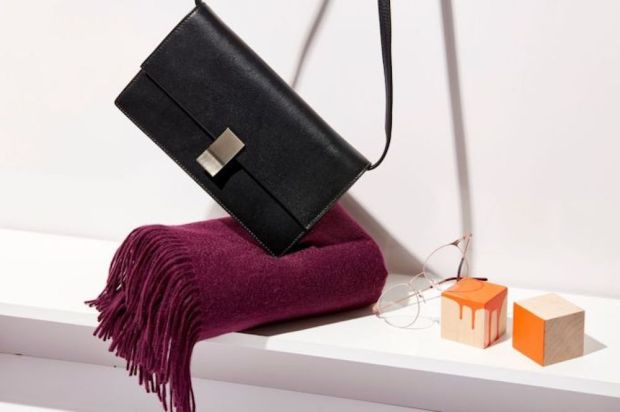Italic’s Brandless Luxury eCommerce

How does one build a brand that isn’t really a brand?
It is a question that a new startup called Italic is tackling, as it looks to build a new type of marketplace where consumers can buy luxury-level goods at a fraction of the price they might pay for the luxury label sewn inside.
The trick – and Italic’s secret sauce – is enabling the handful of specialized manufacturers sprinkled throughout Asia and Europe that produce luxury accessories, eyewear and handbags to sell directly to the consumers who love those products. That means customers will be able to buy things like handbags and leather goods from factories that work with Prada or Givenchy, bedding factories that work with Ritz Carlton and Four Seasons, or leather jackets from the same factory as J Brand.
It’s a brand – yet it’s not one, Founder and CEO Jeremy Cai explained.
“At the end of the day, it’s impossible to say we aren’t building a brand,” he said. “But the brand of Italic [should be that] we can consistently bring you high-quality products at an incredible price point.”
Thus far, Italic has signed up over 100,000 members for its subscription marketplace, and has raised $13 million in funding from Comcast Ventures, Global Founders Capital, Index Ventures, Ludlow Ventures, Kindred Ventures and others.
The vision for the firm, Cai noted, is to give manufacturers a path to building better margins for the goods they produce. The history of manufacturing, he explained to a tech outlet, is really about the history of margins. Typically, he noted, manufacturers battle with how low those margins are, despite the fact that they are literally rolling final commercial goods off of their lines. Instead, the brands for which they manufacture make the profit when they mark them up for retail sale.
But what if the manufacturers could sell directly to the consumer and cut the brands out of the middle?
That was the question Cai posed initially, and built the Italic brand to do just that. Italic picks up the part of the equation usually handled by the buyer brands – things like product design and marketing – but does not itself purchase any goods at all. Instead, Italic offers the platform for sale. That involves somewhat more risk for the manufacturers, who have to sell what they produce.
Italic is very young and its business model is unproved, meaning there is work to be done in convincing factories to take a risk. But of the 15 factories with which the brand has already inked partnership deals, according to Cai, many “jumped at the opportunity.” Apparently, he noted, a direct-to-consumer path is an option many have been wanting for some time.
Because the products are designer-quality but without that designer label, their pricing will be quite a bit lower. Handbags tend to cap out pricewise at $300, bedding tends to run from $80 to $100 and a high-quality leather jacket will run less than $500. There are cheaper goods out there, of course, but Italic is meant to apply to the middle 40 percent of customers who want high-end goods, but maybe not at designer prices.
There are complexities here, and Cai admits that the business model works better with some goods than others. The customer who purchases a designer bag, for example, is purchasing more than quality of construction – they are also buying the label, which means Italic may not have the right goods for that particular consumer. Cai also noted that intellectual property issues can make it tricky for certain categories, like electronics. To steer clear of any copyright infringement or IP issues, all designs created for Italic will be new, and anything that looks remotely similar to a copycat will not be sold.
That said, Italic is not shy about advertising the designer pedigree that goes along with its goods. The site plainly notes that their handbags are “made in the same factory as Prada” and that its creams are “made from the same ingredients as La Mer.”
It is not an approach that will delight luxury brands, but Italic has worked long and hard with a legal team to make sure the startup’s approach checks out. And while luxury brands could punish their manufacturers for working with Italic, Cai believes that is pretty unlikely given the competitive lay of the land.
“We would never work with a factory that solely relies on one client for their revenue,” he said. “Our factories are huge, well-established ones that have been in the business for 50, 60 years and have over 30,000 employees.”
But for the manufacturers the program does work for, the possibility of selling direct to consumers is still much more lucrative than the reality of selling via brands.
“Our manufacturers make several multiples more than they make with their current brand clients,” Cai noted.
To shop on Italic, one cannot simply show up – the site is based on a membership model that is currently free for the first year, but will eventually cost around $120 annually. That model, according to the founder, allows the firm to control the demand, since quantities of goods on offer are limited. Moreover, he noted, the model also allows the firm to get more direct consumer feedback, and potentially bundle benefits along with commerce services for their customers in the future.
“We are never going to have the Gucci handbag shopper buying a handbag from us,” Cai noted. “But the shopper that cares about good-quality leather might buy a brandless leather jacket from us, or brandless skin care.”
